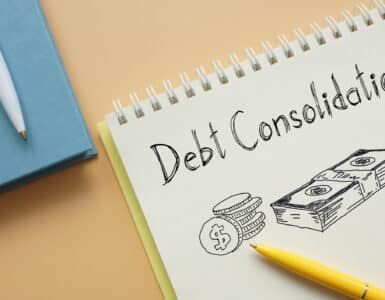Americans are swimming – make that drowning – in credit card debt. As of the first quarter of 2025, outstanding credit card balances in the U.S. total $1.18 trillion, according to the Federal Reserve Bank of New York. This is a decrease of $29 billion compared to the previous quarter (Q4 2024), but it is still 6.01% higher than the level a year ago.
U.S. Household Debt is Rising
To break that down, here are some of the recent statistics:
- The average credit card debt per American in February 2025 was $6,455. That’s up $194 from February 2024, according to TransUnion.
- The average credit card interest rate on accounts with balances assessed interest is 21.91% in February 2025, according to the most recent data from the Federal Reserve.
Quick Case Study
If you have a credit card balance of $6,455 with a 21.91% interest rate and make payments of $150 a month, you’ll more than double what you owe with an extra $6,477 in interest, and it will take you 87 months to pay off the balance.
How to Break the Debt Cycle
There are two main strategies to help people get out from under high-interest debt and wipe away the mountain of stress that carrying such a financial load can bring. First up is what’s known as the debt snowball method.
The Snowball Method
The idea with the snowball method is that people need to see progress pretty quickly to maintain momentum and continue paying off their credit card balances.
Here’s how to start the snowball method:
- Take a look at all of your credit card balances.
- Find the one with the smallest balance.
- Pay as much as you can on that card every month (while still making the minimum payment on your other cards).
- Once the card with the lowest balance has been paid off, tuck it in a drawer and begin to throw more money at the next smallest balance until it’s paid off.
- Continue down this path until all of your balances have been wiped out.
Why the Snowball Method Works
A study published in the “Journal of Consumer Research” outlines three experiments that were conducted among people who carried balances across multiple credit cards. The results showed that concentrated “repayment strategies tend to boost consumers’ motivation to become debt-free, leading them to repay their debts more aggressively,” according to the research.
“This motivating effect is most pronounced when the repayments are concentrated into consumers’ smallest accounts because (people) tend to infer overall progress in debt repayment from the greatest proportional balance reduction within any one account.”
- Downside of the Snowball Method. Unfortunately, the snowball method can cost more because you don’t take into consideration how high the interest rate is on the debt you pay down first.
The Avalanche Method
That’s where the avalanche method comes in. For this debt repayment plan, do the following:
- Take a look at all your credit card interest rates or APRs.
- Place the bulk of your efforts on the credit card with the highest interest rate, while still paying the minimum on everything else.
- You work to pay off the highest interest rate card first because that’s the one that costs the most money.
- By simply switching the order in which you pay off your debts, you can save thousands, depending on what you owe.
Hybrid Approach
There is also a way to combine the debt paydown methods to work in your favor.
- Snowball. If you are convinced that paying off a small balance in full will give you the jolt you need to keep at it, go for it.
- Avalanche. Then, once that first credit card is paid off, tackle the card with the highest interest rate. You’ll be glad you did.
With reporting by Casandra Andrews






